Effective bar inventory management is essential for controlling costs and maintaining profitability. Whether you operate a small pub or a high-volume establishment, tracking liquor, beer, wine, and supplies accurately helps prevent overstocking, reduces waste, and informs better purchasing decisions.
Our free bar inventory template simplifies the process with a clean, straightforward design. Available in Google Sheets, Excel, and PDF formats, it provides the basic structure you need to monitor stock levels and track inventory costs without unnecessary complexity.
Quick Jump
ToggleWhat Is a Bar Inventory Spreadsheet?

A Bar Inventory Spreadsheet Template is a ready-made spreadsheet that makes tracking your bar’s alcohol and beverage inventory much easier.
It helps you keep track of what’s running low, monitor costs, and know when it’s time to reorder. Think of it as your inventory safety net that eliminates guesswork and prevents costly surprises when you discover you’re out of essential items during peak hours.
Why Use Our Bar Inventory Spreadsheet Template?
- Free and easy setup: Get started instantly with this ready-to-use template that requires no software purchases or complex installations.
- Reduced inventory costs and waste: Track exact quantities on hand alongside par levels to order only what you need, preventing costly overordering and minimizing product waste from expired items that tie up your cash flow.
- Streamlined supplier management: Maintain all supplier contact details and lead times in a single, central location, enabling faster reordering decisions and stronger vendor relationships without the need to search through separate contact lists or purchase histories.
- Enhanced profitability through cost control: Monitor unit costs and track inventory values across all products, giving you clear visibility into your biggest expense category to make more informed pricing and purchasing decisions.
Download Spreadsheet Daddy’s Free Bar Inventory Management Spreadsheet
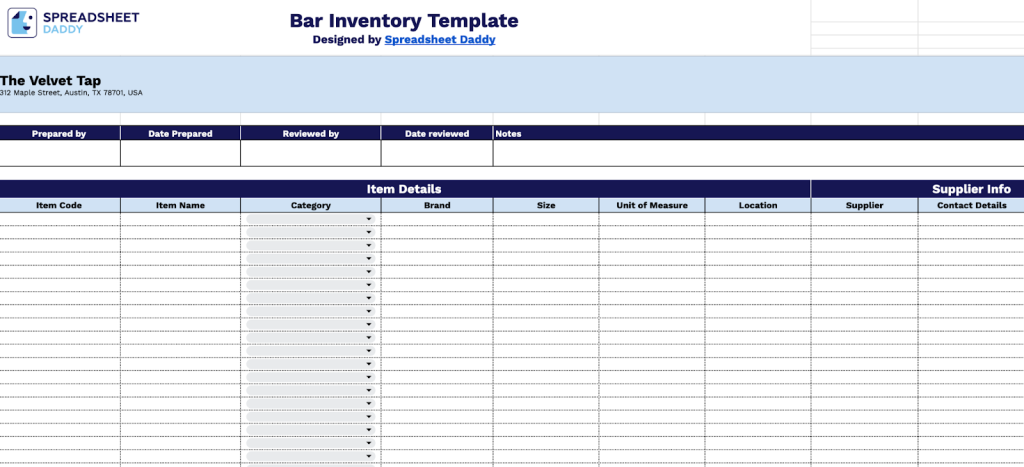
Our Bar Inventory Template provides a straightforward way for bars and restaurants to keep track of their beverage stock.
It offers an organized approach to inventory management that helps ensure you always have the right products available while staying on top of costs and freshness.
What’s included
- Comprehensive item management system: Track item codes, names, categories, brands, sizes, and storage locations with dedicated fields for complete product cataloguing and easy identification across your entire bar inventory.
- Supplier relationship management: Maintain supplier contact details and lead times in integrated columns, enabling efficient vendor communication and strategic reorder planning without requiring separate supplier databases.
- Inventory and cost controls: Monitor current stock quantities, par levels, and unit costs to maintain clear visibility of inventory levels and profit margins while identifying optimal reorder points for seamless operations.
- Expiration and quality tracking: Manage date-sensitive products with received dates, expiration dates, and automatic days-left calculations to prevent waste, ensure freshness, and maintain health code compliance.
- Professional documentation workflow: Built-in header structure captures business details, preparation tracking with assigned staff and dates, review processes, and dedicated notes sections for comprehensive inventory documentation and accountability.
How to Use Our Bar Inventory Spreadsheet Template
1. Start by selecting the format that works best for your bar: download the inventory template in Excel or PDF format, or create your own copy of the Google Sheets document.
2. Fill in your establishment’s details, including bar name, address, and the person responsible for inventory tracking, plus the date the count was finished. Record the supervising manager’s name and when they reviewed the results. Use Notes to record breakage, discontinued items, delivery issues, or count discrepancies.

3. Fill in the Product Details section by documenting all beverage and supply specifications:
- Item Code: Enter the unique identifier or SKU number for inventory tracking and ordering purposes.
- Item Name: Record the complete product name, including specific variety or flavor when applicable.
- Category: Specify the type of inventory (alcoholic beverages, mixers and soft drinks, bar tools and glassware, etc.).
- Brand: Include the manufacturer or distillery name for accurate identification and reordering.
- Size: Document the volume or quantity per unit (750ml, 1L, case of 24, etc.).
- Unit of Measure: Define how the item is counted (bottles, cases, pounds, liters, each, etc.).
- Location: Record where the item is kept (back bar, wine cellar, walk-in cooler, dry storage, etc.).
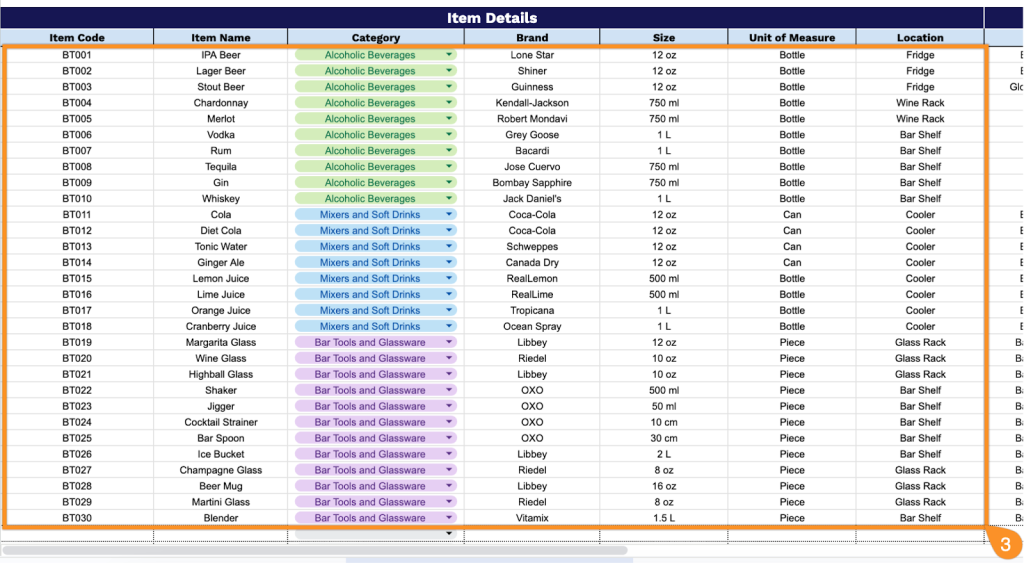
4. Document supplier relationships in the Supplier Info section for efficient procurement management:
- Supplier: Enter the distributor or vendor company name for this specific product.
- Contact Details: Include your phone number, email, and sales representative’s information for placing an order.
- Lead Time: Record the typical delivery timeframe from order placement to receipt.
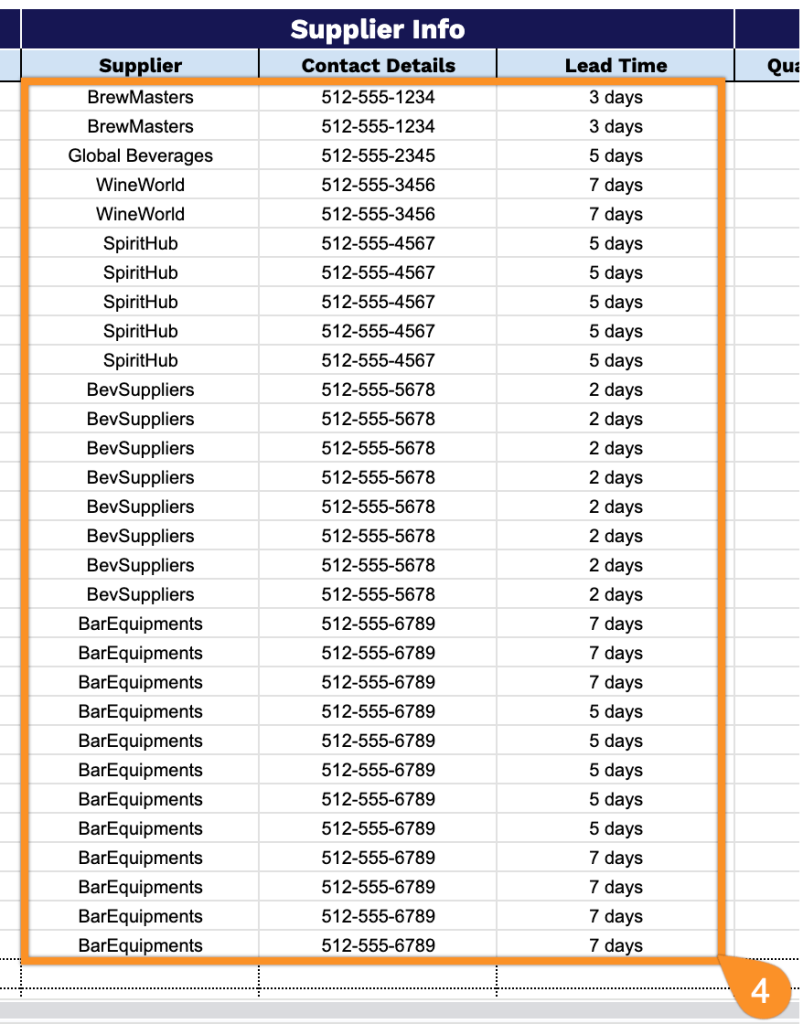
5. Manage stock levels in the Inventory Tracking section to maintain optimal bar operations:
- Quantity on Hand: Record the current physical count of units available in storage and on the bar.
- Par Level: Set the minimum amount that should be maintained to avoid stockouts during service.
- Unit Cost: Include the price per individual unit for cost calculations and profit margin analysis.
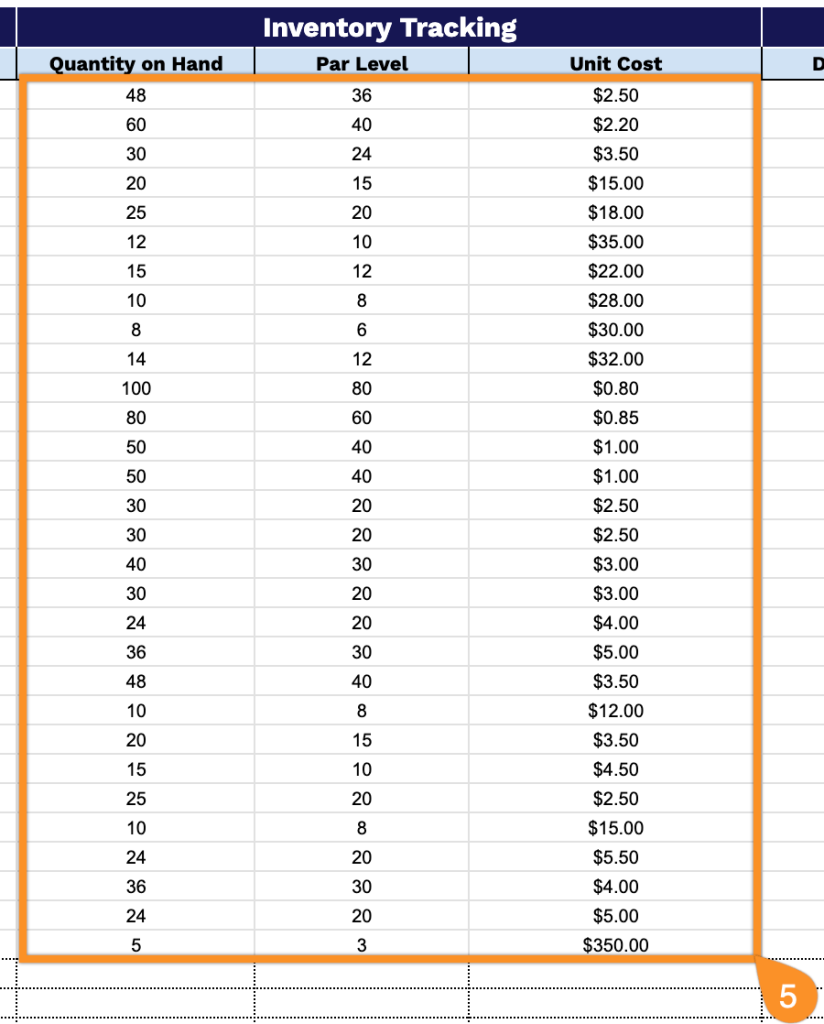
6. Monitor freshness and compliance in the Date-Specific Tracking section for quality control:
- Date Received: Document when the shipment arrived to track inventory age and rotation schedules.
- Expiration Date: Record the manufacturer’s expiration or best-by date for perishable items.
- Days Remaining: The template will automatically calculate how many days are left before expiration based on the Date Received and Expiration Date.
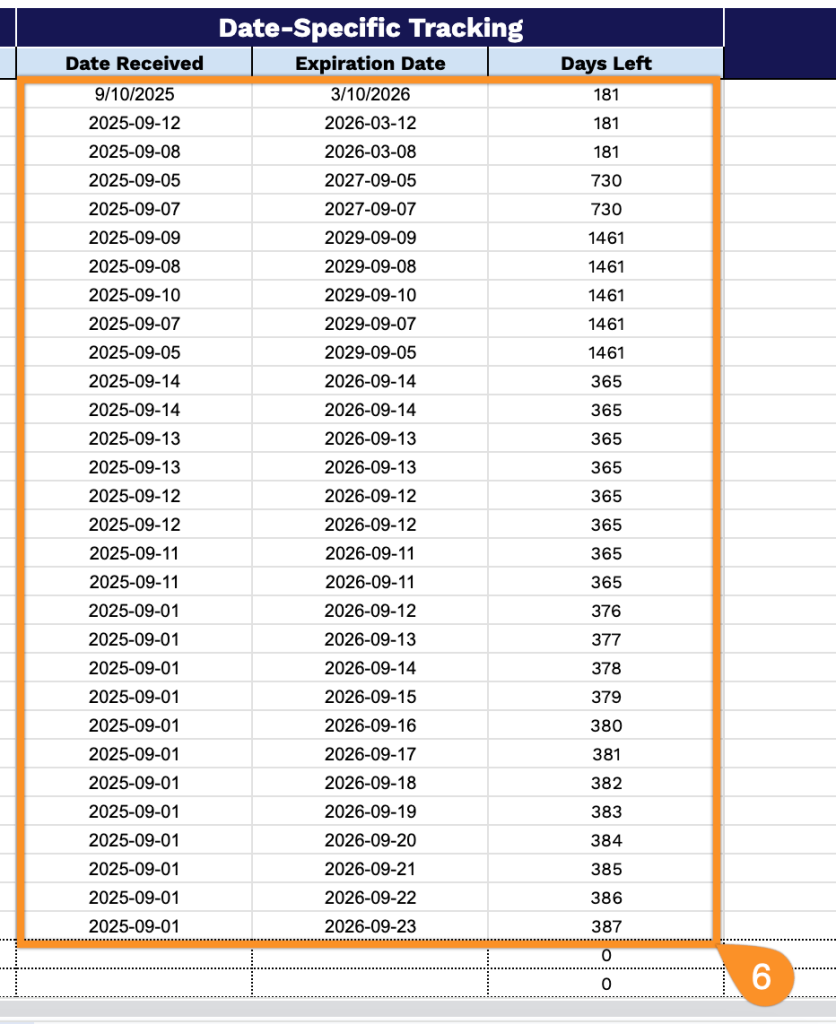
7. Include additional details and considerations in the Notes section to help prioritize stock orders and manage inventory resources effectively.
